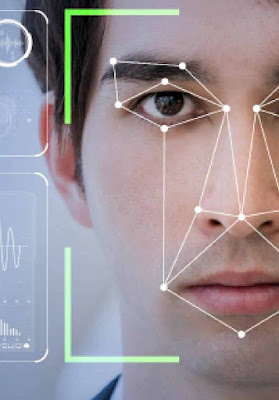 |
| Facial recognition and NGI |
The Next Generation Identification (NGI) system is a fast, accurate, and contactless biometric identification option for U.S. intelligence and law enforcement. It was created by the FBI in order to expand the capabilities of the Integrated Automated Fingerprint Identification System (IAFIS), which identifies subjects by their fingerprints and looks up their criminal history. The NGI system augmented simply looking at fingerprints- it has advanced lookup capabilities.
The identification data of NGI is amazing,
since it merged all the original fingerprint data from the IAFIS database, which
houses over 100 million individual records, with new biometric data, including
palm prints, iris scans and face recognition records.
In
the MISSION OF VENGEANCE spy thriller, the facial recognition component of NGI
is brought out. The CIA often combines AI with biometrics to map facial
features from a photograph or video taken by field operatives. It compares the
information with an NGI database of known faces to find a match.
Here are a few snippets from MISSION OF VENGEANCE, showing how intelligence
operatives identify the bad guys quickly in crowds:
Snippet
1: Several hundred thousand Russian tourists flew into Punta Cana and Santo
Domingo from Moscow and St. Petersburg each year. Corey had the CBIF-DR5 team take photos of
them as they arrived at airports, booked into hotels, and relaxed on sunny
beaches. The photos were sent to the FBI’s Next Generation Identification
System, NGI, which CBIF taps into- a vast digital database of fingerprints, DNA
profiles, iris scans, palm prints, voice identification profiles, and facial
photographs.
Most
of the Russian visitors were young and came from educated, upper-middle-class
families with no NGI alerts. They simply wanted to catch some tropical sun and
go shopping. A few weren’t so nice, and NGI identified them as FSB and GRU
agents. Corey feared the Russian man who contacted the bootlegger was one of
them.
Snippet
2: The FBI team walked in with four handcuffed prisoners. The young and
very peppy agent Sterling was the team leader. He beamed proudly as he spoke.
“We’ve
uncovered a large Russian troll and hacking operation in what was believed to
be a mere DVD bootlegging operation. We’re confiscating all the computers and
ran all the Russians inside through the NGI database. It came back with hits on
these four. They were indicted by a federal grand jury for interfering in the
2016 U.S. elections.”
Marshall pointed to the remaining three who were in their late twenties
and in excellent shape with crew cuts. “I can smell military or intelligence
spooks a mile away. What did NGI come up with on them?”
“Your right on, sir. They’re GRU intelligence officers who have been at
large and sheltered in Russia since 2016, or so we thought. They’re under
federal indictment for conspiracy to hack into the computers of the Hillary
Clinton campaign and the DNC. Money laundering, identity theft…”
Marshall interrupted. “Are you saying these are the same subjects that
the Mueller investigation charged with hacking into and stealing the DNC
documents, then releasing them?”
“Exactly, sir. These are the guys who used Guccifer 2.0 to disseminate
the stolen documents through Wikileaks.”
End of snippets
The video "Uh-Oh, The FBI Just Got Facial Recognition
Technology" explains this FBI surveillance tool, the Next Generation
Identification System, or NGI. It explains how facial recognition software is a
major part of NGI, and why the FBI plans to collect up to 52 million photos of
people's faces. It highlights the privacy issues as well, for your chance of anonymity
may be over.
Robert Morton is a member of the Association of Former Intelligence Officers (AFIO), enjoys writing about the U.S. Intelligence Community, and relishes traveling to the Florida Keys and Key West, the Bahamas and Caribbean. He combines both passions in his CoreyPearson- CIA Spymaster series. Check out his latest spy thriller: MISSION OF VENGEANCE.






No comments:
Post a Comment